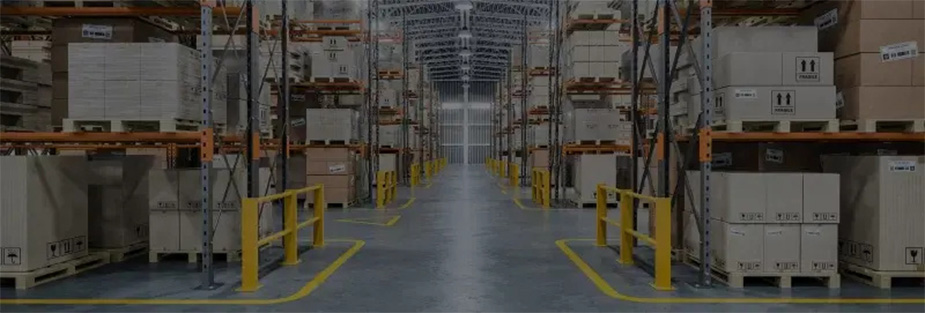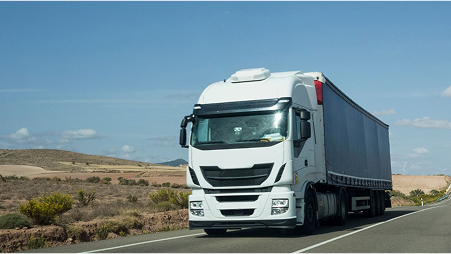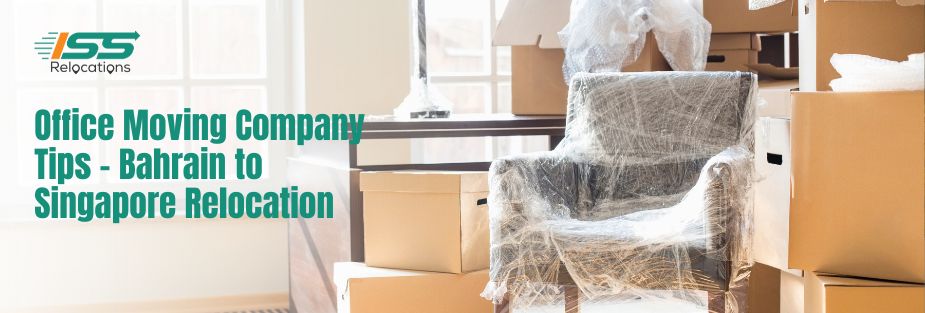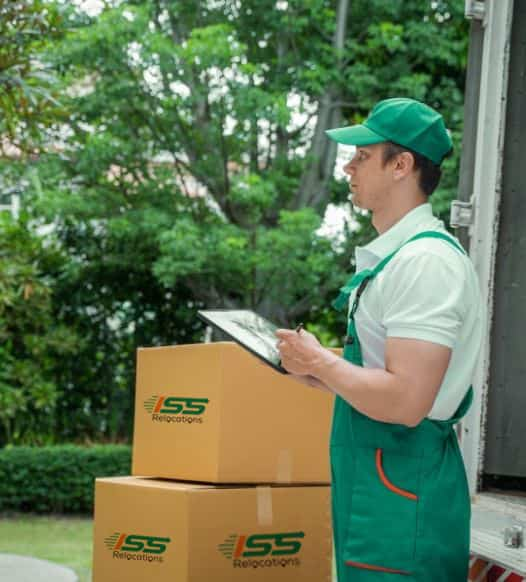
Long-term Storage: How To Pack Your Items
When it comes to packing your items for long-term storage, it’s important to take the necessary precautions to ensure that they remain safe and in good condition until you need them again. Whether you’re storing personal belongings, furniture, or heavy machinery, proper packing is key to protecting your items from damage.
At ISS Relocations, we understand the importance of long-term storage and have extensive experience in helping clients properly pack and store their items. In this blog post, we’ll share our tips on how to pack your items for long-term storage, so you can have peace of mind knowing that your belongings are safe.
Before we dive into the tips, it’s important to understand why proper packing is crucial for long-term storage. When items are stored for an extended period of time, they can be susceptible to damage from environmental factors, such as temperature and humidity, pests, and wear and tear. By packing your items correctly, you can protect them from these potential hazards and ensure that they remain in good condition.
ISS relocations is a relocation company that specializes in hassle-free relocation of all your goods and heavy machinery when you are moving abroad. We provide professional packing services to ensure that your items are packed and stored properly, so you can have peace of mind.
Evaluate what items need to be stored
When preparing to pack items for long-term storage, it is important to evaluate what items need to be stored. This will help you determine how much packing material you will need, what size storage containers to use, and how to properly pack and store each item.
Consider the following when evaluating what items need to be stored:
Fragility: Fragile items, such as glassware, electronics, or antiques, require special care and handling during packing and storage. Consider using extra packing materials, such as bubble wrap or packing peanuts, to protect these items during transportation and storage.
Size: The size of the items being stored will also affect how they are packed and stored. Large items, such as furniture or appliances, may need to be disassembled and packed in separate containers. Smaller items may be packed together in the same container.
Storage duration: The length of time that items will be in storage can also affect how they are packed and stored. Items that will be in storage for a shorter period may require less packing materials than items that will be stored for a longer time.
Storage conditions: Consider the storage conditions of the facility where your items will be stored. Items that will be stored in a climate-controlled environment may require different packing materials than items that will be stored in a non-climate-controlled environment.
Value: Consider the value of the items being stored, both monetary and sentimental. Items that are valuable should be packed and stored with extra care to ensure their safekeeping.
By evaluating what items need to be stored, you can properly plan and prepare for their packing and storage. This will help ensure that your items remain in good condition during their time in storage and are easily accessible when you need them.
Choose the right packing materials
Once you’ve determined which items you need to store, the next step is to choose the right packing materials. Here are some recommended packing materials for long-term storage:
Cardboard boxes: Sturdy cardboard boxes are great for packing and storing items such as clothing, books, and kitchenware.
Bubble wrap: Bubble wrap is essential for protecting fragile items such as glassware, porcelain, and electronics.
Packing paper: Packing paper is great for wrapping delicate items and provides an extra layer of protection.
Plastic wrap: Plastic wrap can be used to wrap furniture and protect it from scratches and dust.
Furniture blankets: Furniture blankets are great for protecting furniture from scratches and dings during transportation and storage.
Disassemble large items
Disassembling large items before storing them can save you space and make them easier to transport. It also reduces the risk of damage during the storage period. However, disassembling large items can be a daunting task, especially if you are not familiar with the process. Here are some tips to help you properly disassemble large items for long-term storage:
Read the instruction manual: If your large item came with an instruction manual, be sure to read it thoroughly before you start disassembling it. The manual should provide detailed instructions on how to disassemble and reassemble the item, as well as any tools you may need.
Gather the right tools: Disassembling large items often requires specialized tools, so be sure to gather all the necessary tools before you start. This may include screwdrivers, wrenches, pliers, and other tools.
Take pictures: Before you start disassembling your large item, take pictures of it from different angles. This will help you remember how it is supposed to look when you reassemble it.
Remove any detachable parts: If your large item has detachable parts, such as shelves, drawers, or doors, remove them first. This will make the item lighter and easier to move.
Label and store small parts: If you have to disassemble any small parts, such as screws or bolts, be sure to label them and store them in a safe place. You don’t want to lose any important parts during the storage period.
Protect delicate parts: If your large item has any delicate or fragile parts, such as glass or mirrors, be sure to protect them before you start disassembling the item. Use bubble wrap or other protective materials to prevent damage.
Follow the instructions: As you disassemble your large item, be sure to follow the instructions carefully. If you get stuck or are unsure of how to proceed, consult the instruction manual or seek advice from a professional.
By following these tips, you can properly disassemble your large items for long-term storage and reduce the risk of damage during the storage period.
Clean and prepare items for storage
Before packing your items for long-term storage, it’s important to clean and prepare them properly. This includes wiping down surfaces, removing any dirt or debris, and ensuring that all items are completely dry before packing them.
For items that require special care, such as electronics and appliances, refer to the manufacturer’s instructions for cleaning and preparation.
Label and inventory items
Labelling and inventorying your items before storage is essential for keeping track of what items are in storage and where they are located. Be sure to label each box or container with the contents inside and any special handling instructions.
Creating an inventory list can also help you keep track of what items you have in storage and where they are located. This can be especially helpful if you need to access your items before the end of the storage period.
Choose the Right Storage Container
Choosing the right storage container is crucial for keeping your items safe and secure during long-term storage. The container should be made of sturdy materials that can withstand the weight of the items inside and protect them from external factors such as moisture and dust.
Plastic Bins
Plastic bins are a popular choice for long-term storage because they are sturdy, water-resistant, and come in a variety of sizes. They are also stackable, which makes them easy to store in tight spaces. Plastic bins are a great option for items that are fragile or valuable, as they provide better protection than cardboard boxes.
Cardboard Boxes
Cardboard boxes are a more affordable option than plastic bins, but they may not be as durable or water-resistant. They are best suited for items that are not fragile or valuable and can withstand some wear and tear.
Wooden Crates
Wooden crates are a sturdy and durable option for long-term storage, but they can be expensive. They are best suited for heavy or bulky items that require extra protection. Wooden crates are also a great option for items that need to be stored in a climate-controlled environment.
Pallets
Pallets are a great option for storing large or heavy items that are difficult to move around. They are also useful for items that need to be stored off the ground to avoid moisture or flooding. Pallets are a cost-effective option for long-term storage, as they can be reused multiple times.
Pack Items Securely
Properly packing your items is essential for preventing damage during long-term storage. Here are some tips to ensure that your items are packed securely:
Use packing materials such as bubble wrap, packing peanuts, or foam to protect fragile items.
Fill any empty spaces in the container with packing materials to prevent items from shifting during transportation.
Place heavier items on the bottom of the container and lighter items on top.
Label any boxes containing fragile items as “fragile” and use arrows to indicate which side should be facing up.
Seal boxes or containers with heavy-duty packing tape to prevent dust or moisture from getting inside.
Store Items in the Right Environment
Storing items in the right environment is crucial to maintaining their condition during long-term storage. Here are some factors to consider when choosing the right environment for your items:
Temperature: Extreme temperatures can cause damage to items in storage. High temperatures can cause warping or melting, while low temperatures can cause cracking or brittleness. The ideal temperature for most items is between 55-85°F (13-29°C).
Humidity: Humidity can also affect items in storage. High humidity can cause mold, mildew, or rust, while low humidity can cause items to become brittle. The ideal humidity range is between 30-50%.
Light: Exposure to light can cause items, such as fabrics or photographs, to fade or discolour. Store items in a dark or dimly lit area to prevent damage from exposure to light.
Security: Choose a storage facility that has proper security measures in place, such as surveillance cameras, gated access, or security personnel. This will help prevent theft or damage to your items.
Ventilation: Good ventilation is important to prevent moisture build-up and maintain air quality. Choose a storage facility that has proper ventilation systems in place to ensure that your items remain in good condition.
Pest control: Make sure that the storage facility has proper pest control measures in place to prevent infestations that can damage your items.
Accessibility: Choose a storage facility that allows you to easily access your items when you need them. Make sure that the storage area is well-lit and that there is enough space to move around and handle your items.
By considering these factors, you can choose the right environment for your items during long-term storage. This will help ensure that they remain in good condition and are easily accessible when you need them.
Conclusion
Properly packing your items for long-term storage is essential for keeping them safe and in good condition. Follow these tips from ISS Relocations to ensure that your items are packed securely and stored in the right environment.
Choosing the right storage container, packing items securely, and storing them in the right environment are all crucial steps in the process. Labelling and inventorying your items can also help you keep track of what items are in storage and where they are located. At ISS Relocations, we have extensive experience in long-term storage and can provide you with expert advice and assistance. Contact us today to learn more about our storage services and how we can help you with your long-term storage needs.
Plan Stress-free Move with Top Moving Company in UAE - ISS Relocations

Frequently Asked Questions
How long can a moving company hold your stuff?
The duration for which a moving company can store your belongings depends on the contract and storage agreement. ISS Relocations provides flexible short-term and long-term storage solutions with secure, climate-controlled facilities, ensuring the safety of your items until you’re ready for delivery.
What are the best long-term storage options?
Climate-controlled storage units, sealed containers, and specialized warehouse storage are the best options for long-term storage. ISS Relocations offers secure, temperature-regulated storage facilities that protect your valuables from damage, moisture, and pests.
How much does it cost to store items for movers?
Storage costs vary depending on duration, space required, and facility type. ISS Relocations provides cost-effective storage solutions, whether you need temporary storage during a move or long-term storage for personal or business items.
What is the best storage for moving?
Secure storage facilities with climate control and 24/7 monitoring are ideal for moving. ISS Relocations offers state-of-the-art storage options to keep your belongings safe until they reach their final destination.
What is an alternative to moving boxes?
Plastic storage bins, vacuum-sealed bags, and reusable crates are excellent alternatives to traditional cardboard moving boxes. ISS Relocations helps clients choose the best packing materials for secure long-term storage and transportation.
What is the most useful size moving box?
Medium-sized boxes (18″x18″x16″) are the most versatile for packing a variety of household items. ISS Relocations provides expert packing services and high-quality moving materials to ensure safe and efficient packing for long-term storage.
Are moving bags or boxes better?
Boxes are more durable and stackable, making them ideal for long-term storage, while moving bags are flexible for temporary packing. ISS Relocations offers tailored packing solutions to ensure your belongings remain secure and organized during storage and transport.
Moving Company - Recent Blog
Stay informed and prepared for your next move with our latest blogs on moving services in the UAE. From expert packing tips to international relocation guides, ISS Relocations brings you up-to-date insights to make your moving experience smoother, safer, and stress-free.










